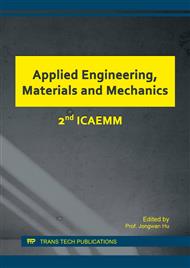p.114
p.119
p.125
p.130
p.143
p.149
p.155
p.160
p.165
Geotechnical Study on the Use of Sanitized Sewage Sludge in Cover Layers of Solid Waste Landfills
Abstract:
Giving the current trend of recycling and reutilization residues, sludge reuse has become an environmental, social and economic necessity. A possible destination would be the utilization of sludge as part of cover layer in solid waste landfills. This paper aimed at investigating the geotechnical implications of the addition of domestic sanitized sewage sludge on clayey-silty sand. The sludge was sanitized with hydrated lime, in the proportion of 25% lime and 75% sludge, and held for 90 days in an agricultural greenhouse for its total stabilization. Then, geotechnical tests were conducted using pure soil, pure sanitized sewage sludge and mixtures of these two materials. Three mixtures were tested: 50% soil and 50% sludge, 66% soil and 33% sludge and 90% soil and 10% sludge. The results showed that the sanitized sludge is a coarse-grained material and, its Atterberg’s limits showed the lack of plasticity. Generally, the greater the sludge percentage in the mixture, the bigger the decrease on the shear strength parameters, it also leaves them lighter and more permeable. At the end, the conclusions were that the 10% sludge and 90% soil mixture has shown geotechnical characteristics that allow its utilization as daily and intermediate cover layers. The sludge and the 50% sludge mixture have shown geotechnical properties adequate for their utilization as component in draining sub-layer in final cover layer.
Info:
Periodical:
Pages:
143-148
Citation:
Online since:
October 2017
Keywords:
Price:
Сopyright:
© 2017 Trans Tech Publications Ltd. All Rights Reserved
Share:
Citation:


